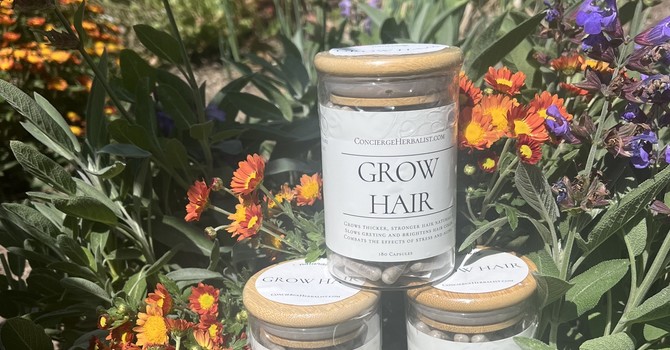
Ask An Herbalist: Perioral Dermatitis
Question (32 year old female): I have these red pimples around my mouth that my dermatologist says is “perioral dermatitis”. She gave me steroid cream but it made it worse, and she doesn’t have any other suggestions besides to “wash my face well.” Does Chinese Medicine have any herbs available that might help?
Answer: The short answer is Yes! I have a highly effective combination of herbs that can successfully treat perioral dermatitis. In fact, this is one of the quicker skin conditions to treat, with clear skin usually in 1-3 months. Perioral dermatitis can be a recurrent condition with flare-ups. The goal of the herbal combination is to first eliminate the breakouts, and afterwards to minimize recurrence. While most skin conditions have multiple possible causes (diagnoses) according to Chinese theories, perioral dermatitis is almost always the same cause. In most cases, it can be cleared up in 1-3 months. Afterwards, patients can keep some herbs on hand to stop a future recurrence in its tracks. For those interested, you’ll find more information about perioral dermatitis below, including the triggers that can cause a flare, and suggestions for outbreaks.
About Perioral Dermatitis
Perioral dermatitis is a chronic inflammatory condition of the skin that typically manifests around the mouth (perioral region) and nostrils (perinasal region), but can also appear around the eyes (periorbital dermatitis) or in front of the ears (periauricular dermatitis). A more accurate term for this condition is periorificial dermatitis. For simplicity, we will refer to it as perioral dermatitis.
Perioral dermatitis was first documented in the 1950s. Prior to this, there are no records of its occurrence in the U.S., Europe, or China. The condition's exact cause remains unknown, but there is a strong association with the use of potent topical steroid creams, which were introduced in the 1950s. This correlation might explain why the condition was not recognized before that time.
Perioral dermatitis predominantly affects women between the ages of 20 and 45, though it can occur in any age group, including children. It is rare in men.
Clinical Presentation
Lesions associated with perioral dermatitis are characterized by well-defined erythema (redness) with clusters of small papules, vesicles, and less commonly, pustules. There may also be fine scaling, and the skin may feel tight, stingy, or burning. Itching is generally mild. The redness and intensity of the lesions can fluctuate and the condition may persist for months or years, potentially resolving spontaneously.
Perioral dermatitis lesions typically appear symmetrically around the mouth, in the smile lines between nose and mouth, and around the nostrils. They can also spread to the sides of the nose, chin, cheeks, lower eyelids, or glabella. A distinguishing feature of perioral dermatitis is the sparing of the vermilion border of the lips. The vermillion border is your lip line, and perioral dermatitis almost always does NOT extend into the lips.
Potential Triggers
- Topical steroid creams. While many patients develop perioral dermatits without having used steroid creams, it is a known trigger to cause and exacerbate this condition.
- Dry skin and Moisturizers. In individuals with naturally dry skin, excessive use of moisturizers can disrupt the skin’s barrier, potentially leading to bacterial growth and contributing to the condition. Daily use of moisturizers is associated with an increased risk of perioral dermatitis.
- Cosmetic foundations. Cosmetic foundations are also associated with an increased risk of perioral dermatitis.
- Oily skin. Those with oily skin need to cleanse properly with warm water and mild soap to avoid oil buildup that can trigger a flare.
Common Contributing Factors
- Female gender
- Hormonal changes (menstrual cycle, birth control pills, pregnancy)
- Use of steroids (topical, inhaled, oral)
- Cosmetics, especially foundation
- Use of occlusive moisturizers containing petroleum-based ingredients
- Sunscreens
- Zinc deficiency
- Exposure to allergens and irritants (soaps, cleansers, detergents, essential oils, toothpaste, dental fillings)
- Environmental factors (sunlight, UV light, heat, wind)
- Atopic dermatitis patientsHealthcare/medical workers
Treatment Suggestions
Effective treatment of perioral dermatitis involves several steps.
- Chinese Herbal medicine has effective treatments and preventative herbs to reduce flares.
- Discontinue the use of topical steroid creams (gradually wean off if you have been on them a long time).
- Avoid moisturizers on the affected areas.
- Limit or stop using sunscreens and cosmetics.
- Wash the face with just warm water.
- Avoid soaps and chemicals on the skin.
- Avoid alcohol-based toners and acne medications containing benzoyl peroxide.Keep the pillowcase clean.
- Avoid spicy and greasy foods.
Causes According to Traditional Chinese Medicine (TCM)
Perioral dermatitis is almost always caused by the pattern (diagnosis) of, in Chinese Medical terms, Liver Qi Stagnation (your anatomical Liver is fine! This is a Chinese medical term). Emotions such as frustration, anger, irritability, or depression can often surround the issue. This stagnation of what Chinese medicine calls “Liver Qi” can lead to Heat accumulation, causing Damp Heat and mild Blood Stasis. Treatment usually involves addressing these diagnostic patterns with a formula (combination of herbs) to clear heat, move qi and blood, and nourish the blood. You drink the herbs 2 times a day. In my experience, the skin clears in 1-3 months. As follow up and prevention, you can keep herbs at home and “at first sight/feeling” of a breakout, the condition can be quelled to avoid future flare-ups. In my practice, I often will prescribe a maintenance combination of herbs to address the disposition towards Liver Qi Stagnation to avoid any flare-ups at all.
Differential Diagnosis - What Else Might It Be?
Acne
- Perioral dermatitis lacks comedones (black heads).
- Vesicles are not present in acne.
- Lesion sizes are more uniform in perioral dermatitis.
- Acne often affects the chest and back and may cause scarring.
Rosacea
- Rosacea affects a broader area of the face and cheeks than perioral dermatitis.
- Rosacea includes more varied lesion sizes and generalized erythema.
- Rosacea often presents with telangiectasia (visible small veins) and flushing, which are absent in perioral dermatitis.
Seborrheic Dermatitis
- Seborrheic dermatitis shows greasy scaling and erythema. It often can involve the scalp, eyebrows, and ears.
- It is more common in men, unlike perioral dermatitis, which is more common in women.
Allergic/Irritant Contact Dermatitis
- Contact dermatitis often crosses the vermilion border (lip line) and is intensely itchy.
- It may have more vesicles and an abrupt onset.
Conclusion
Perioral dermatitis is a chronic skin condition that is effectively treated with Chinese Herbal medicine. Its management also involves avoiding known triggers, using appropriate topical and systemic treatments, and considering Chinese Herbal medicine approaches for effective, long-term remission and care.
Dr. Kim Drolet, DACM, LAc
ConciergeHerbalist.com

Kim Drolet
Contact Me



